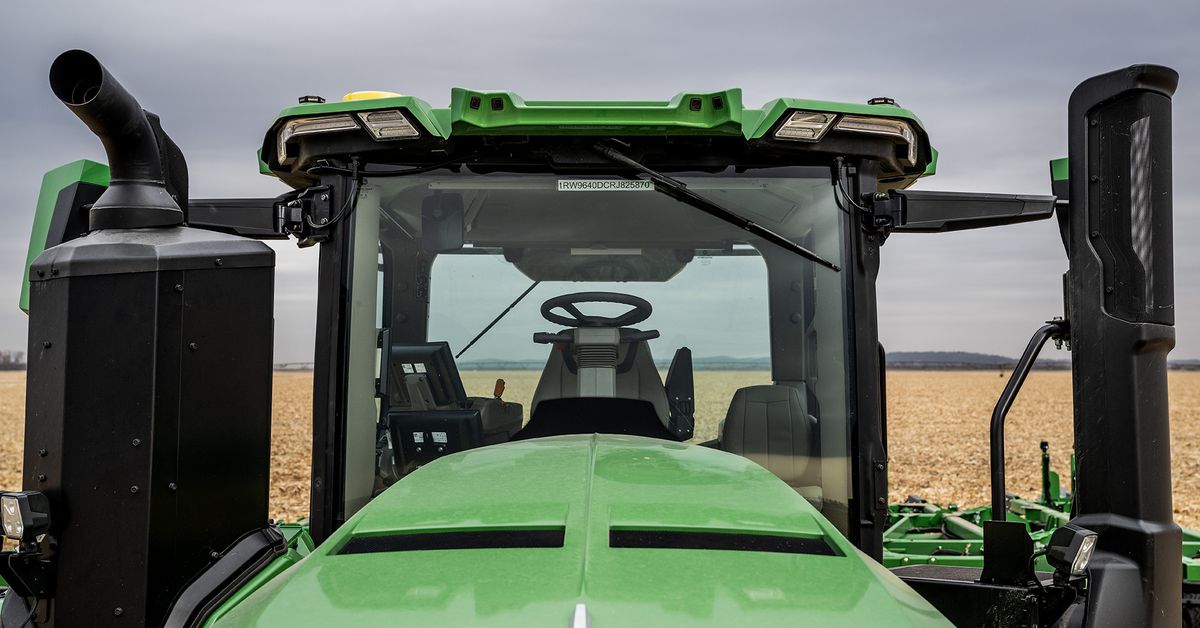Revolutionizing Agriculture: How Self-Driving Tractors Are Tackling Labor Shortages
The agricultural landscape is undergoing a seismic shift as the industry grapples with a significant labor shortage. With many farms struggling to find enough hands to plant, tend, and harvest crops, technology has emerged as a vital lifeline. One of the most groundbreaking innovations on this front is the advent of self-driving tractors. Companies like John Deere are pioneering this technology, which promises to enhance efficiency and reshape farming practices for the future.
The Current State of Labor in Agriculture
Labor shortages in agriculture are not a new phenomenon, but recent years have seen an exacerbation of the issue. Factors such as an aging workforce, stricter immigration policies, and the allure of better-paying jobs in urban areas have contributed to a dwindling pool of agricultural workers. According to the U.S. Department of Agriculture, over the past decade, the number of agricultural workers has declined sharply, with many farms reporting difficulties in hiring sufficient labor during peak seasons.
This labor gap is particularly pronounced during harvest time when the demand for workers spikes. Without enough hands to manage the fields, crops can go unharvested, leading to significant financial losses for farmers and food insecurity for consumers. This is where self-driving tractors come into play.
Self-Driving Tractors: A Technological Breakthrough
Self-driving tractors, equipped with advanced sensors, GPS technology, and artificial intelligence, are designed to operate autonomously in the fields. These machines can perform a variety of tasks, from plowing and planting to cultivating and harvesting, with minimal human intervention. The technology allows farmers to optimize their operations, increase productivity, and ultimately address the labor shortage.
John Deere has been at the forefront of this revolution. Their autonomous tractors are capable of working around the clock, enabling farmers to maximize their output without the need for a full crew of workers. The integration of automation in agriculture not only alleviates the labor burden but also enhances precision farming—allowing for more efficient use of resources such as water, fertilizers, and pesticides.
Benefits of Self-Driving Tractors
The introduction of self-driving tractors offers numerous benefits for farmers and the agricultural sector as a whole:
- Increased Efficiency: Autonomous tractors can operate longer hours without the fatigue that human workers experience. This leads to faster fieldwork completion and better crop management.
- Cost Savings: While the initial investment in autonomous technology may be high, the long-term savings on labor costs and increased yields can be substantial.
- Precision Agriculture: Self-driving tractors are equipped with technology that allows them to operate with pinpoint accuracy, reducing waste and optimizing resource usage.
- Data Collection: These tractors can gather vital data on soil conditions, crop health, and weather patterns, providing farmers with actionable insights to improve their practices.
- Environmental Impact: By reducing the overuse of fertilizers and pesticides through precision application, self-driving tractors contribute to more sustainable farming practices.
Challenges and Considerations
Despite the myriad advantages, the transition to autonomous tractors is not without its challenges. Farmers must consider several factors before adopting this technology:
- Investment Costs: The price of self-driving tractors can be a barrier, especially for small-scale farmers. It’s crucial to evaluate the return on investment and potential subsidies or financing options available.
- Training and Adoption: Farmers and their teams may need training to operate and maintain these new technologies, which can initially slow down the transition.
- Technical Reliability: As with any technology, there are concerns about reliability and potential malfunctions. Farmers must have contingency plans in place for equipment failures.
- Regulatory Issues: The legal framework surrounding autonomous vehicles is still evolving. Farmers must stay informed about regulations that may affect their use of self-driving tractors.
The Future of Self-Driving Tractors in Agriculture
As the agricultural industry continues to evolve, the role of self-driving tractors is expected to expand. Innovations in artificial intelligence and machine learning are paving the way for even more sophisticated autonomous systems that could revolutionize not just farming practices but the entire supply chain. For example, the integration of drones and other robotic technologies alongside self-driving tractors could create a fully automated agricultural ecosystem.
Furthermore, as climate change poses increasing challenges to food production, the precision and efficiency offered by autonomous tractors could become essential in mitigating these impacts. By optimizing resource use and reducing environmental footprints, farmers can contribute to more sustainable food systems. This is particularly relevant as consumers become increasingly conscious of the environmental impact of their food choices.
Conclusion
Self-driving tractors are more than just a technological marvel; they represent a lifeline for an industry facing significant labor shortages. By harnessing the power of automation, farmers can enhance their productivity, optimize their resource use, and ensure the sustainability of their operations. As companies like John Deere continue to innovate, the future of agriculture looks promising, with self-driving tractors paving the way for a more efficient and resilient agricultural sector.
In summary, embracing self-driving technology in agriculture not only addresses labor shortages but also enhances the overall efficiency of farming practices. As we move forward, it’s crucial for farmers, technology developers, and policymakers to collaborate and ensure that this revolution benefits all stakeholders in the agricultural ecosystem.
See more Business Focus Insider Team

